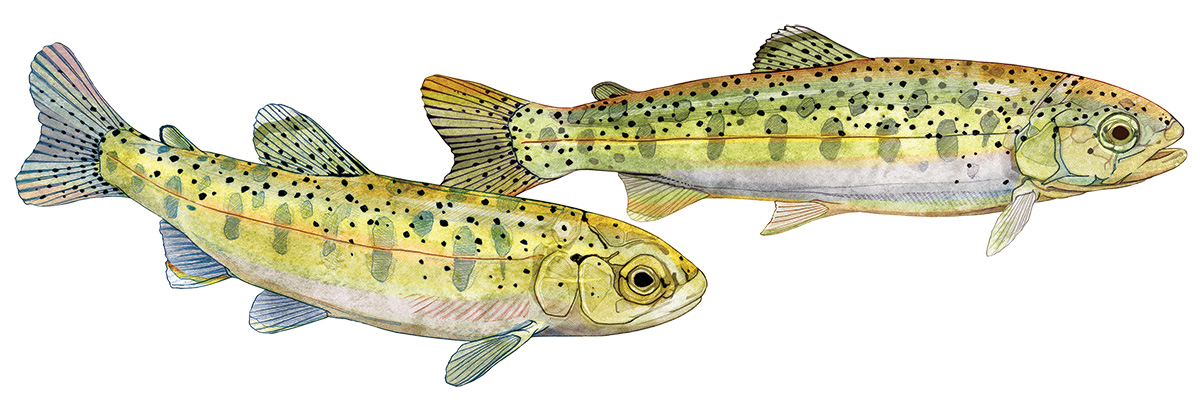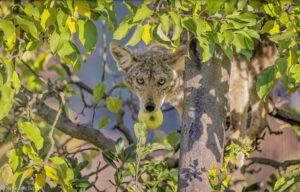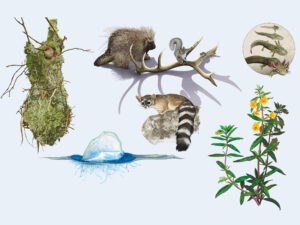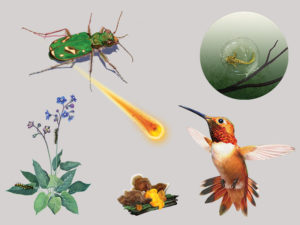
Text and research by Bay Nature staff.
When Dragonflies Get Busy

Our resident common green darner dragonflies (Anax junius) begin to mate and lay eggs by midsummer. Normally, it’s a sight you can’t help but notice. Over a pond or marsh, males fly almost constantly, patrolling the area and aggressively pursuing females. Using the three claspers at the end of his abdomen, the male grabs the female’s head and tows her around like a horse with a carriage. She curls the tip of her abdomen up near his thorax to retrieve his sperm. Almost immediately, the egg laying begins: a few here and a few there, tucked into watery vegetation. Meanwhile, he continues to hold her head, hoping to keep other males from swooping in.
But these aren’t normal times. And how the increasing fire and smoke in a California summer affects both dragonflies and damselflies is largely unknown. Help the citizen science nonprofit Odonata Central (OdonataCentral.org) collect data by checking out their Western Hemisphere “Odolympics” project this summer.
Bonfire Moss

If you find yourself asking “What’s that?” while looking at nature’s version of a green shag carpet in an area that was recently burned, there’s a likely answer: bonfire moss (Funaria hygrometrica). It thrives on bare sooty ground, spreading out fast and then shooting up matchstick-length stalks that hold spores. The moss stabilizes the soil and can even suck lead from contaminated water. The improved conditions mean other plants start to move in, pushing out the pioneering moss. By summer, the green carpet begins to wither into a mat of twisty auburn cords, and the land moves on.
Waterlogged

Smokey Bear is out and Smokey the Beaver is in. If the baritone-voiced, hat-wearing bear embodied an era of fire suppression, then the eco-engineering, industrious beaver heralds a future of restoration. Research by environmental scientist Emily Fairfax (who conceived of Smokey the Beaver) shows that where there are American beaver (Castor canadensis) dams, the surrounding plants survive during dry times. As water pools behind the dam, it spreads and saturates the adjacent soil. These verdant and waterlogged areas may provide a refuge for wildlife during fire. Sections of creek without beavers “were on average more than three times as affected by fire,” Fairfax writes.
Fresh Perspective

During summer, adult black-tailed deer (Odocoileus hemionus columbianus) in the Bay Area are either shedding velvet from their newly grown antlers or tending juveniles who were born in the spring. They’re also noshing on the season’s fresh forbs and grasses. The green fuzz of new shoots in a recently burned area, coupled with leafless shrubs and trees, has an upside for deer: there’s no place for their predators to hide. In a foliage-free landscape, we humans marvel about how much we can now see—the rocks and silhouettes of trees. Deer are thinking the same thing but about mountain lions.
Cool Runnings

Smoke. Soot. Ash. It has long been known that a blanket in the sky made of any of this particulate matter can deflect solar radiation and lead to cooling of the land, air, and water below. Researchers have refined this idea to examine how California wildfire smoke changed summer water temperatures along the Klamath River. These are complex calculations, but on average they suggest that the smoke cooled the mean water temperature by about three-quarters of a degree Celsius. That could help cold-water fish, like steelhead (Oncorhynchus mykiss), which are struggling to survive summers in our warming rivers.
A Napa Phoenix

On Mount George in Napa County, lazuli buntings (Passerina amoena) showed up—lots of them—in the burned chaparral areas following the deadly and destructive Atlas Fire in 2017. No one had ever recorded lazuli buntings there before, says Mike Palladini, stewardship program manager for the Land Trust of Napa County. For three years, the birds made Mount George home each spring, likely drawn to the food and shrubby nesting spots created by the blaze. Now they’re popping up in areas burned during the LNU Complex fires, like the nearby Wragg Ridge Preserve. Look for them picking through the leaf litter in search of insects and seeds or flitting between low shrubs. They stick around through June and even early July, these fire-following birds.




